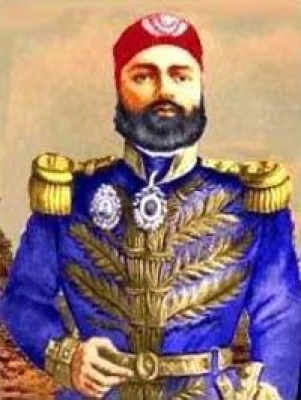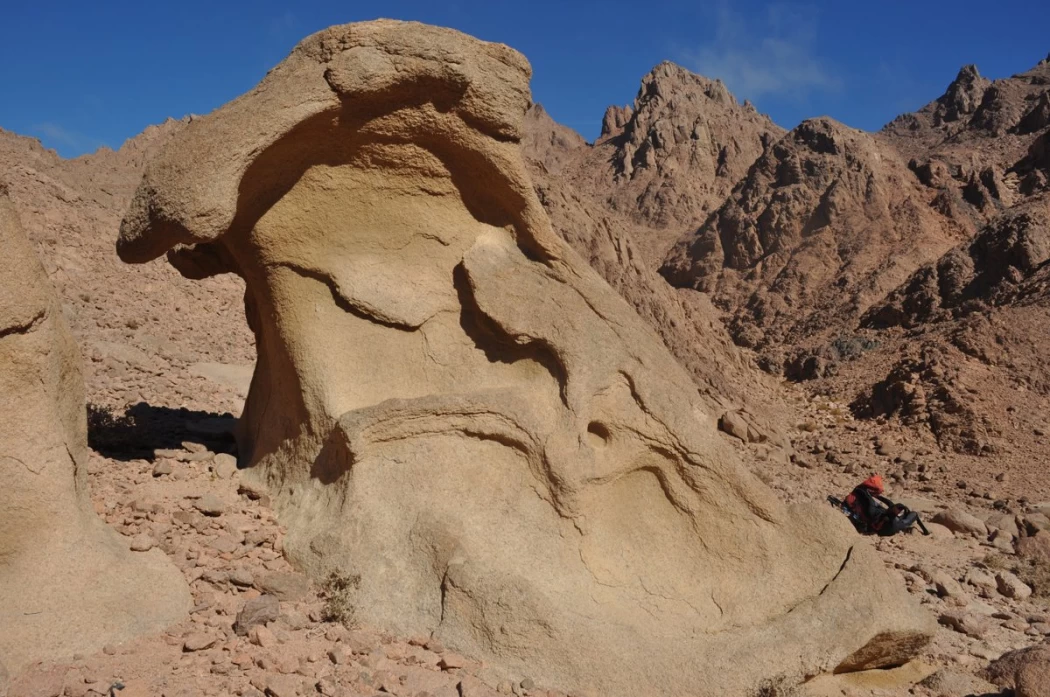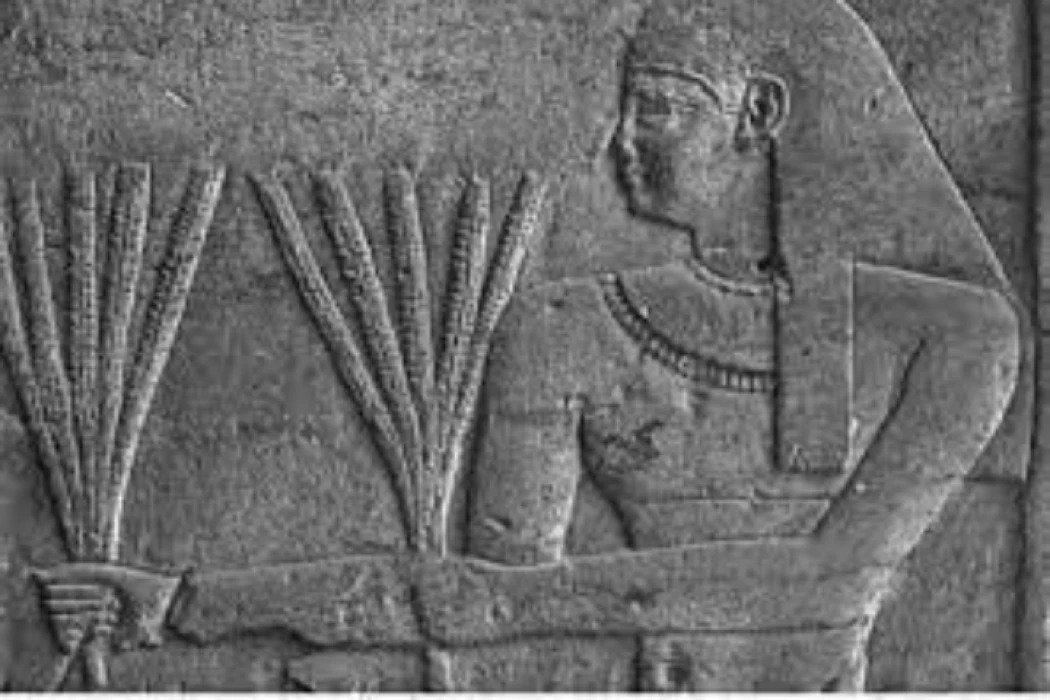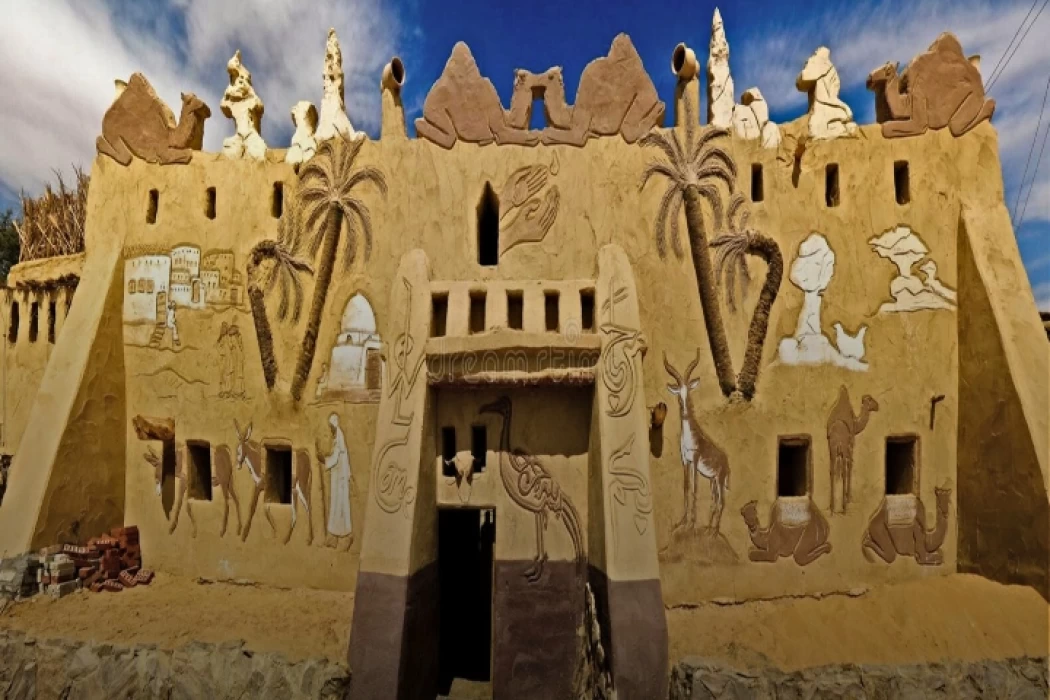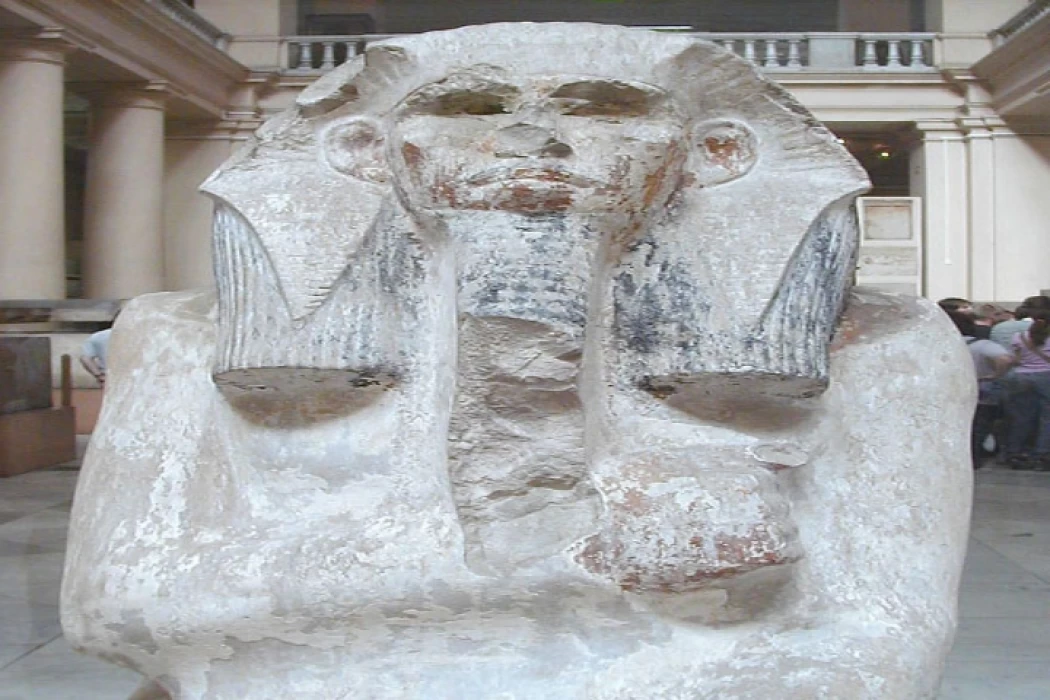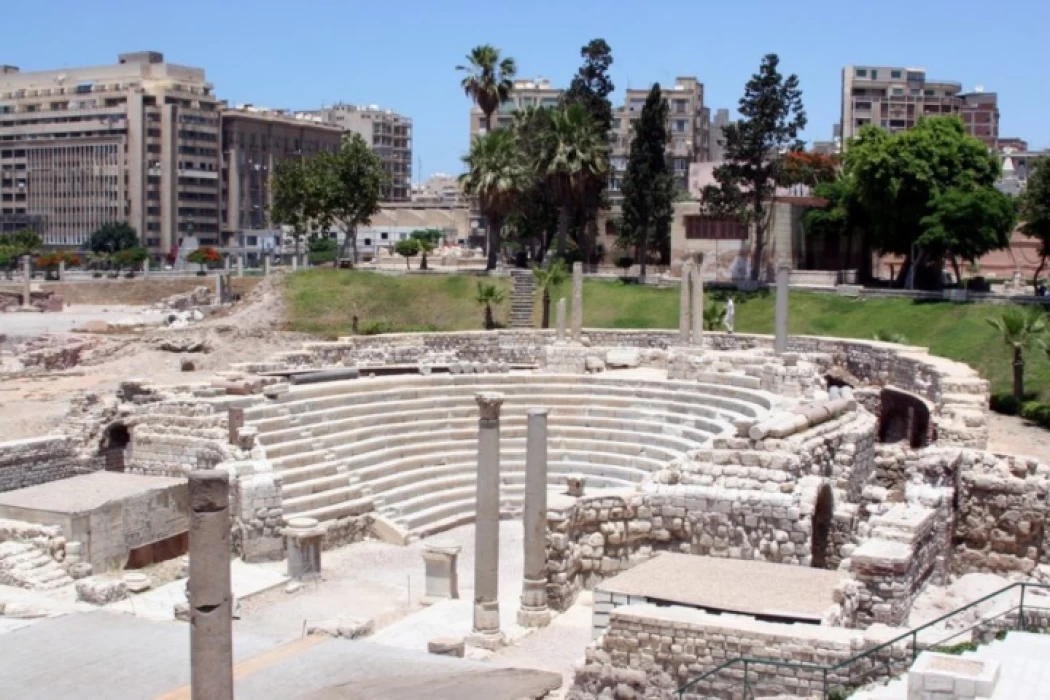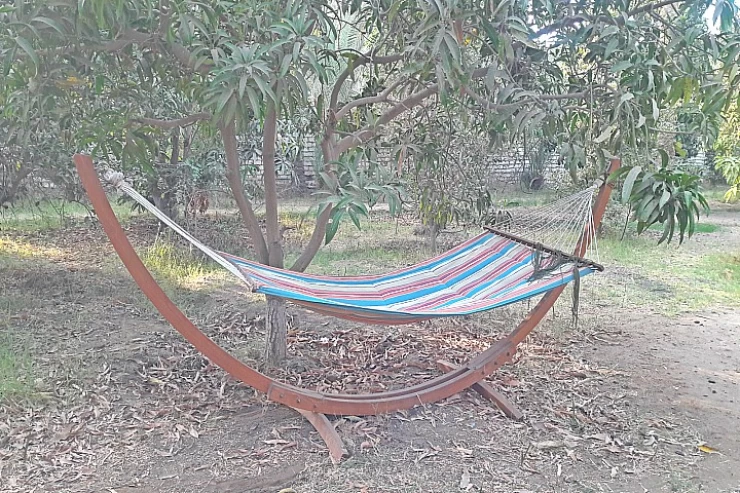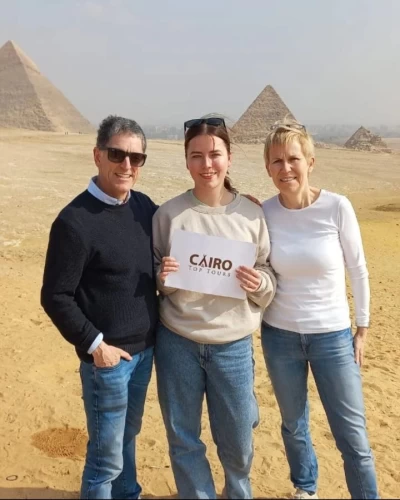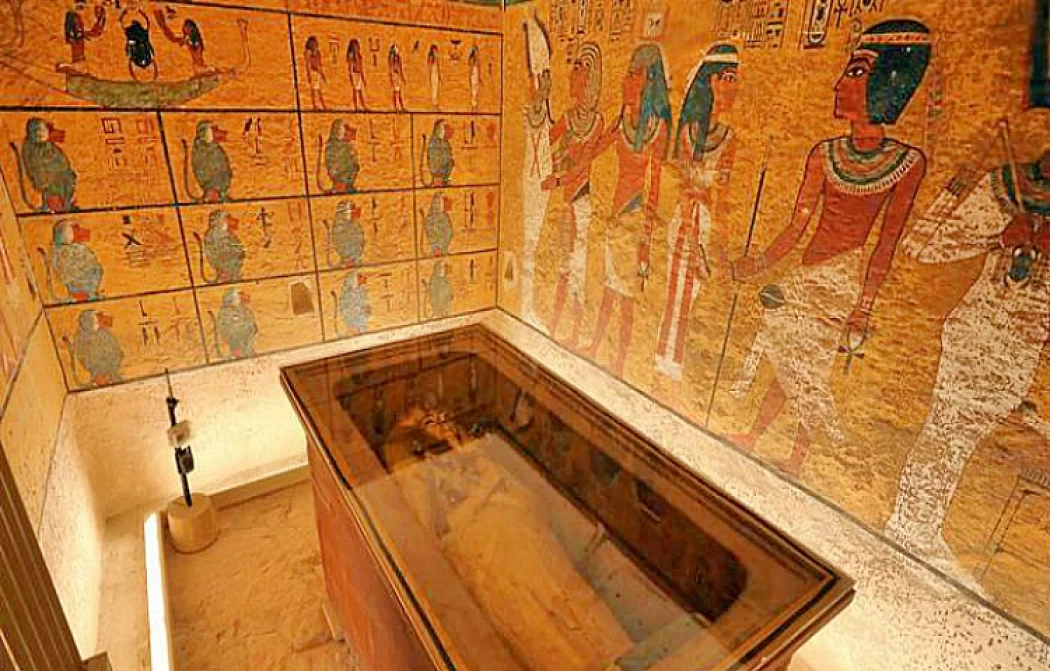
History of Tutankhamun's Tomb
The Tomb of Tutankhamun or Tomb 62 according to scientific coding and is known internationally as (KV 62), is the Tomb of Pharaoh Tutankhamun, located in the Valley of the Kings in Egypt on the Western Bank of the Nile opposite the city of Luxor today. The tomb has gained wide international fame for the riches and treasures it contained when discovered, as it is the only tomb of the ancient kings of Egypt that was found in its entirety and was not stolen by thieves either in ancient or modern times. It was discovered in 1922 by Howard Carter under the ruins of workers ' huts built since the era of the Ramesses, which indicates that the cemetery remains in good condition. It was not tampered with or stolen, as happened in the rest of the cemeteries of the region during the period of deterioration of the reign of the Ramesses and the establishment of the state of the good priests.
The tomb was found stacked with Royal belongings in no order, and Carter was able to take pictures of wreaths of flowers that disintegrated as soon as they were touched in an attempt to move them out of the cemetery. Carter continued to take notes about the cemetery and describe the Royal belongings in it for a whole decade until he finished transferring the belongings in the cemetery to the Egyptian Museum in Cairo.
The Tomb of Tutankhamun located in the valley of the Kings was originally dedicated to a member of the royal family, and it may have been to the elderly Minister AI, who succeeded Tutankhamun after his death, but due to Tutankhamun's sudden death at a young age, two large chambers were added to the tomb and completed the Tomb KV62 to be for Tutankhamun, and the addition of these two rooms quickly indicates Tutankhamun's sudden death. The " I " who ascended the throne shortly after Tutankhamun's death was buried in Tomb WV23, which was probably originally dedicated to Tutankhamun, and the inscriptions on the walls of the "I" tomb were found almost identical to the inscriptions on the walls of Tutankhamun's Tomb.
The funeral mask of Tutankhamun is made of special gold and encrusted with precious stones.
Archaeologists believe that Tutankhamun's tomb was entered by thieves at least twice shortly after his burial and they tried to steal it, due to the presence of several seals on the entrance to the tomb, and the presence of the contents of the two large rooms piled without order, indicating an attempt to steal and then re-seal the tomb and seal it from officials. "Carter also found lists of the contents of the Tomb, some of which are missing in the inventory, indicating that they were stolen in the old days, and it seems that the re-closure of the tomb took place during the reign of Horemheb, who succeeded AI.
Since the entrance to the Tomb of Tutankhamun KV62 is located under the entrance staircase of one of the later constructed tombs of the Ramses, under the Tomb of Ramses VI KV9, the ruins of that tomb and the housing built on it for workers covered the entrance to Tomb 62, so Tutankhamun's Tomb remained hidden from view for thousands of years.
The cemetery is divided into entrance A by a staircase consisting of 16 steps, followed by a 7-meter inclined vestibule, then a transverse rectangular front chamber 8 meters long and 67 and 3 meters wide, from which two chambers branch off in a northerly direction: the sarcophagus chamber and the treasure chamber. Also branching from the anteroom is a small additional anteroom towards the West. The walls of the tomb are not decorated except for the coffin room, on it there are inscriptions from the Book of the Dead and several pictures depicting Tutankhamun meeting the gods in the other world.
3500 pieces of contents were found distributed in different rooms, giving us an idea of the way of living in the royal palace. Carter, who discovered the tomb in 1922, found Tutankhamun's clothes, gold ornaments, fabrics, a large number of scarabs, figurines, as well as vessels, decorative items and incense, as well as pieces of furniture, chairs, oil lamps, pieces for toys, food stocks, drinks, gold and pottery vessels, chariots (they were pulled by horses), military equipment.
From the assets of Tomb 62, about 1,700 items are displayed in the Egyptian Museum in Cairo, the other pieces are stored in the museum, and some of them are displayed in the Luxor Museum.
Some of the contents of the Tomb indicate a difficult transition that passed through Egypt during the Amarna Period, the period of worshiping Aton instead of Amun, which was brought by Akhenaten and the unification of all the gods of the Egyptians into the god Aton, and then the return of the worship of Ammon after the death of Akhenaten and his successor Tutankhamun The Little, an example of this is pieces in the tomb that mummify the name of Tutankhamun, and other pieces bearing the name of Tutankhamun. Lord, he died.
Three beds were found on the western side of the front room, and Tutankhamun's throne chair was found under the bed on the left, and the inscriptions on this chair show a scene from the Amarna era, where his wife "Ankh will die" puts a necklace on Tutankhamun's chest sitting, Between them above their heads is the eye of the sun, which represents the god Aten, rays of which extend and end with the key of life Ankh, and give them life. As for the background of the throne chair, it bears the name "Tutankhamun" and the birth name of his wife "Ankh-SinB-ATON", which corresponds to the Amarna Period.
Under the middle bed, which was shaped like a cow, there were about twenty - five vials containing meat for the King's nutrition in the other world, and the third bed was shaped like a lion.
Carter also found parts of four complete chariots in the corner of the room towards the South-East, including two ceremonial chariots, and Carter found two large statues, larger than usual scales, painted in black and decorated with gold plates guarding the coffin chamber, and in front of them a box decorated with scenes of Tutankhamun during the war campaigns in Syria and Nubia.
The additional compartment (in the drawing anix) branches off from the front compartment in the direction of the interior to the West, and has an area of about 17 square meters, and "Carter" found its contents piled without order, including pieces of furniture from beds, chairs, small wardrobes, and two military vehicles.
The sarcophagus chamber is about one meter lower than the level of the large front chamber, and one of the walls of the chamber contains a square cavity closed by limestone slabs and pieces of Magic Bricks indicating its function in preserving the King's mummy.
The coffin chamber contains four caskets inside each other of gilded wood and they keep a coffin of quasite, formed on its four corners winged gods are ISIS, Nephthys, selkut, and Neth placed in a coffin of quartzite three coffins inside each other in the form of a human, the smallest of which was pure gold and contains the mummy of Tutankhamun. The large cupboard almost fills the room as its dimensions are 5.08 x 3.28 x 2.75 meters, and its thickness is 32, the coffin and The Mummy in it have been left in the 62nd tomb so far, covered by a thick cover of granite stone.
Carter found in the sarcophagus three coffins nested in human form and covered with gold plates, the Inner of which is pure gold. The largest sarcophagus is 224 centimeters long and is made of cedar wood and covered with gold plates, the middle sarcophagus is decorated with gold plates and encrusted with precious stones, and the inner sarcophagus is of pure gold. The golden coffin weighs 110 kg of gold and has the golden mask of Tutankhamun's face on it, inside the coffin, Carter found about 150 decorated necklaces and veils, next to the large cupboard he found 11 wooden paddles for the sun boat, he also found pots containing incense and perfumes, and oil lamps decorated with the image of the God Habi, the God of the Nile.
When Carter entered the coffin room, he found the large gilded cupboard filling the entire room with the inside of other cupboards and coffins, to get the coffin out of the room, Carter had to demolish the south wall between the coffin chambers and the front chamber and died after killing his wife.
The walls of the sarcophagus chamber are decorated with Clockwise scenes from the Book of the Dead, a scene of mouth-opening ceremonies, scenes from the Book of the afterlife (dead), and several scenes depicting Tutankhamun meeting several Gods, including Osiris.
According to the inscriptions, Tutankhamun's journey to the Underworld begins with scenes from the Book of the Dead represented on the wall to the East, hieroglyphs and colorful drawings describe funeral rituals and their coffins, and show Palace elders in white clothes in a state of grief.
The decoration of the northern wall is completed by three scenes showing the King's readiness to move to the other world. The first scene depicts the mouth-opening ritual that takes place for Tutankhamun while he is in the form of Osiris with the minister AI, who wears the blue crown (khepr) characteristic of the Kings of the Eighteenth Dynasty and also wears a tiger skin, characteristic of his position as the high priest, and mentions the name "AI" written inside a cartridge as evidence of his assumption of the throne of Pharaoh after the death of Tutankhamun, and the left scene shows the meeting of the sky goddess Nut with Tutankhamun, followed by the scene of Tutankhamun's interview with Osiris, as he meets Tutankhamun and the Ka followed him and took them to the other world.
A drawing on the left side of the Western Wall of parts of the book of the afterlife, describing the journey of Pharaoh accompanying the god Ra in the form of a "beetle" in the sun boat, (the ancient Egyptians symbolized RA with the disk of the sun during the day, and symbolized him with a beetle during the night, because they believed that the beetle "creates" itself by itself, as they below them are 12 Bavian monkeys representing the twelve hours of the night that Tutankhamun will cross on the way to the afterlife, according to the description of the book of the afterlife and what happens at each hour of the events and what corresponds to Tutankhamun Through her.
The inscriptions about Tutankhamun's journey of transition to the underworld continue on the wall removed by Howard Carter for the coffin to be taken out of the cemetery. Tutankhamun is surrounded by the gods Anubis and hatur, as well as in the company of ISIS in a scene that does not exist today, and is greeted by other gods in the underworld.
One of the most important things found in the side chamber located to the east of The Mummy chamber was the cupboard covered with gold which contains the four canopic jars for preserving the internal entrails of Tutankhamun.the upper part of this cupboard is decorated with the figures of the Golden heads of the Cobra sacred to the ancient Egyptians. the cupboard is also surrounded by four gilded gods installed on it as a symbol of their protection of the contents of the canopic jars, the four gods are: ISIS, Nephthys, selkut, and Neth. Inside the cupboard there are four canopic jars in which the intestines, liver, lungs, and stomach are kept, embalmed with materials for preservation, they accompany the mummy of the deceased to return to him in the other world.
Each of the four canopic jars made of Alabaster has a lid engraved in the form of one of the heads of the Sons of Horus, they are preserving the entrails. The ancient Egyptians considered that Horus gave birth to four sons: "Habi", "amasti", "domotiv" (meaning "protector of his mother"), and "kabhasnov" (meaning "giving drink to his brother"), whose main function is to protect the entrails of the deceased.
Carter also found in the room a black-colored, gold-foil-covered figurine of Anubis sitting on all fours (Anubis was taking the form of a jackal), mounted on a portable chair and having a role in funeral rituals.
Howard Carter discovered the Tomb of Tutankhamun on November 4, 1922, and he was working with funding from an English nobleman, the "Earl of Carnarvon", after he had found near the place pieces of antiquities with Tutankhamun cartridges during the expedition of 1905-1906, indicated the location of Tutankhamun's tomb in the valley of the Kings mummification materials and a cup with the name Tutankhamun, and in 1909 he found the Tomb of King AI and had a gilded war chariot, where "AI" was one of another researcher, the American lawyer "Theodore Davis", was revived by the search for Tutankhamun's tomb and completed his excavations.
Davis returned his research permit on the tomb to the Egyptian authorities, and "Carnarvon" quickly obtained permission from the Egyptian antiquities service to conduct excavations in the Valley of the Kings, but he could not carry out this due to the outbreak of the First World War, he began it only in 1917. Carter, by proxy from "Carnarvon", found the remains of dwellings of ancient workers between the tombs of Ramses II and Ramses VI after removing the ruins from them, and focused his excavation operations on the area near it, Carter did not succeed in starting, so Carnarvon decided in 1921 not to finance more for the project, but Carter was able to convince Carnarvon to continue excavation and found on November 4 on the threshold of a ladder.
Then Carter found 16 ladders and removed from them deposits of Nile mud and rock debris, and he came to a door with seals from the Old Testament: several oval-shaped and tube-shaped seals over nine prisoners, they are called the "nine arches", which is the seal of the royal tombs. Carter filled the entrance again with sand and stones and waited for the presence of those who commissioned him to excavate, Carnarvon and his daughter "Lady Evelyn" came on November 23, 1923, and Carter arrived with a group of miners with him on the afternoon of November 26 to a second barrier sealed with several seals, so he broke a small hole in it and inserted his hand holding a candle, and his report about that at that moment was the following:
"At first I couldn't see anything, and a warm air came to me outside the room, which made the candle flame waver, and after my eyes got used to the darkness, I saw what was inside the room, strange animals, statues and gold-in every direction a golden glitter -".
Excavation work began at Tombs 62 in 1932, when Carter and the scientific group working with him photographed all the assets and wrote them down in lists, for this purpose, the pieces were transferred to a laboratory temporarily established near the Tomb of Sisi II, and "Harry Burton" photographed and wrote down the pieces with the authorization of the American Museum "Metropolitan Museum of art", the evacuation of the contents of the front room took about 50 days, and to remove the large some of the painted scenes had the goddess Isis on them and were also showing Tutankhamun with Anubis and the goddess Hathor.
By 2007 an additional fee was charged to enter the cemetery other than that charged for entering the Valley of the Kings, and the number of visitors to the cemetery was also limited to 400 visitors per day.
At the beginning of 2009, a three-dimensional design identical to the original was created on the Heritage Key website, allowing visitors to visit and inspect the cemetery in an interactive environment.
Latest Articles
Admin
Regin of Abbas I of Egypt | Abbas Pasha I
Abbas has been often described as a mere voluptuary, but Nubar Pasha spoke of him as a true gentleman of the "old school". He was seen as reactionary, morose and taciturn, and spent nearly all his time in his palace. He undid, as far as lay in his power, the works of his grandfather, both good and bad.
Admin
Story of Gabal Shayeb Al Banat - Red Sea Mountain
Jabal shayb al-banat is one of the Red Sea Mountains in the eastern desert in Egypt, located to the west of the city of Hurghada at a latitude of 27 degrees north and a longitude of 33.5 degrees east of the Greenwich line approximately, this mountain is the highest mountain peak in the eastern desert with a height of up to 2185 meters, it is a prominent mass of igneous rocks
Admin
Neper God Of Grain
Neper was the deity of grains, particularly cereals that were important in Ancient Egypt, such as wheat and barley. It was stated that he foretold when the crops would grow, be harvested, and disappear.
Admin
Badr Museum in Farafra
The Badr Museum is located in a mud building, which is the common home found in this medieval part of Egypt. All of the artwork that was created by the artist is quite unique. His work almost always depicts life in the Farafra Oasis and he provides the work through both painting and sculpting.
Admin
Djoser
Djoser was an ancient Egyptian pharaoh of the 3rd Dynasty during the Old Kingdom and was the founder of that epoch. He is also known by his Hellenized names Tosorthros (from Manetho) and Sesorthos (from Eusebius). He was the son of King Khasekhemwy and Queen Nimaathap, but whether he was also the direct successor to their throne is unclear. Most Ramesside king lists identify a king named Nebka as preceding him, but there are difficulties in connecting that name with contemporary Horus names, so some Egyptologists question the received throne sequence. Djoser is known for his step pyramid, which is the earliest colossal stone building in ancient Egypt
Admin
Kom Al Dikka Alexandria
Kom El Deka, also known as Kom el-Dikka, is a neighborhood and archaeological site in Alexandria, Egypt. Early Kom El-Dikka was a well-off residential area, and later it was a major civic center in Alexandria, with a bath complex (thermae), auditoria (lecture halls), and a theatre.
